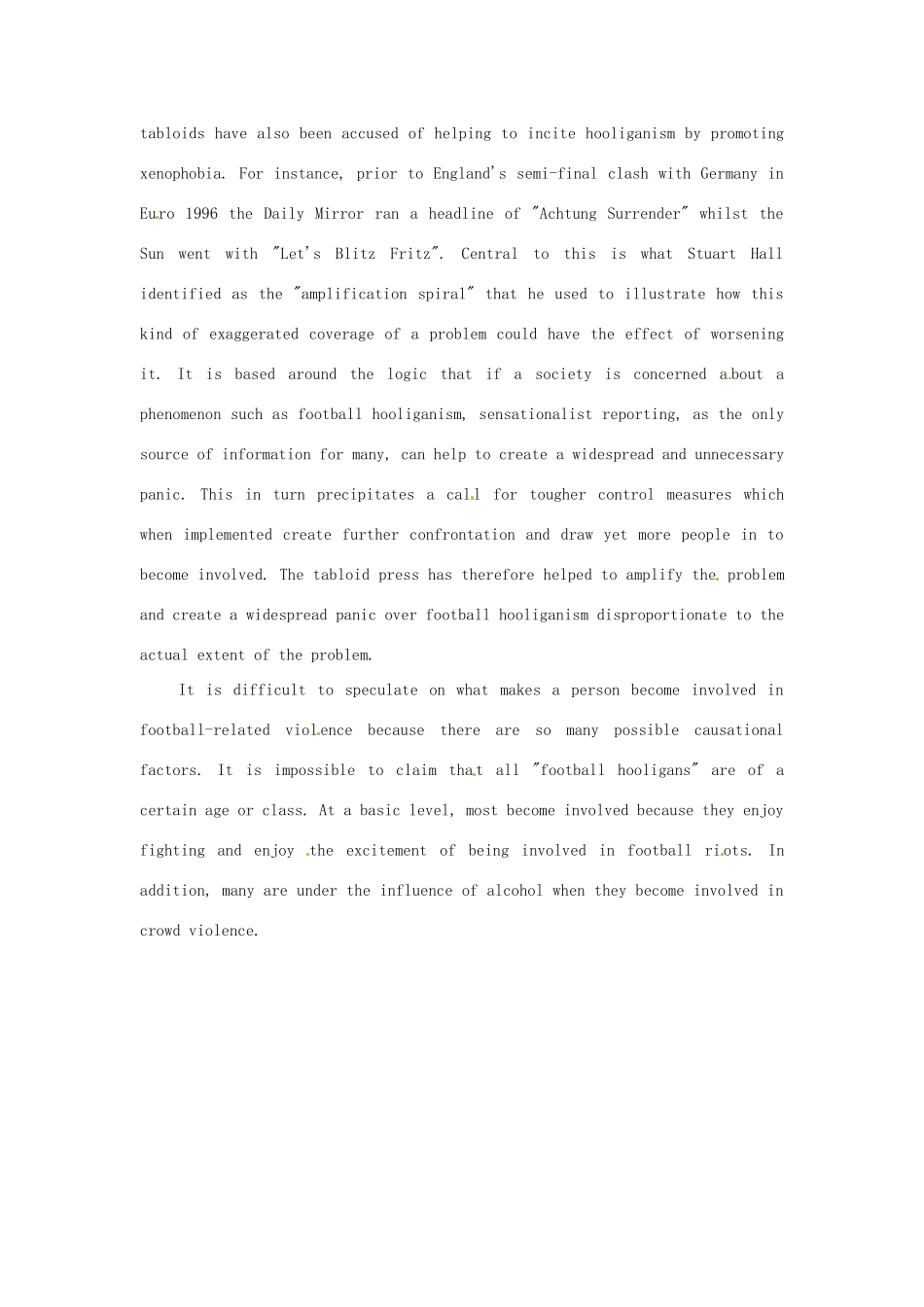高考英语《流行话题 语境识词 4500》Unit 87 Football Hooliganism 素材Unit 87Football Hooliganism Football hooliganism is seen by most as disorder involving football fans. Usually this involves criminal activity and in most cases occurs either at or just before or after a football match. Much football-crowd disorder is spontaneous, but a lot is prearranged by gangs (or "firms") who attach themselves to foot ball clubs and arrange to meet, and fight firms from other clubs. Football hooliganism has been seen as first occurring in the late 1960's, and peaking in the late 1970's and mid 1980's before calming down following the Heysel and Hillsborough disasters. However, incidents of crowd disorder at football matches have been rec orded as early as the 19th Century. During a match in 1846 in Derby two troop of dragoons were called in to deal with a disorderly crowd, whilst pitch invasions became increasingly common from the 1880's onwards. The issue of the media's coverage of football hooliganism is very important as it is the media that help construct the public's understanding and view of the phenomenon. Within Britain the tabloid press in particular has found hooliganism to be an easy target for the kind of sensationalist reporting that boosts their circulation. This sensationalist style of reporting often relies on powerful headlines grounded in violent imagery and war metaphors whilst articles are regularly "edited for impact". This style of reporting has developed over the past 50 years sparked by the moral panic of the 1950's at the rise of juvenile crime and delinquency. To many, the tabloids' style of reporting serves to encourage hooligans and place them in the limelight. Th e tabloids have ...

